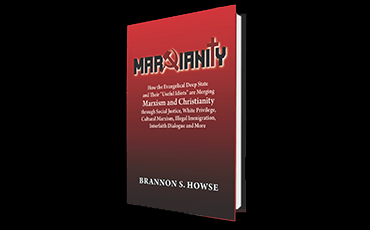Understanding Intelligent Design
Understanding Intelligent Design<?xml:namespace prefix = o ns = "urn:schemas-microsoft-com:office:office" />
Worldview with Sean McDowell
Where did we come from? Why are we here? How did life as we know it come about? Are we accidental by-products of a purposeless, dark, and cold universe (as Darwinian evolution teaches)? Or are we the pinnacle of creation by a loving God? In other words: Is the world a cosmic fluke? Or is the universe the handiwork of personal God? Few questions, it would seem, are more important than these.
If you've taken Biology 101, visited a museum lately, or watched a recent Discovery Channel documentary you've probably heard that the evidence for evolution is overwhelming. University Professor Francis Ayala recently said, "Scientists agree that the evolutionary origin of animals and plants is a scientific conclusion beyond reasonable doubt."[1]
This idea shows up frequently in popular television shows, too. For example, in a Friends episode Phoebe and Ross discuss the merits of Darwinian evolution. Shocked to find that Phoebe rejects it, Ross says, "Uh, excuse me. Evolution is not for you to buy, Phoebe. Evolution is scientific fact, like, like, like the air we breathe, like gravity." If you look closely, you'll also find Darwinism being taught in the children's movie Lilo and Stitch and in a recent episode of The Family Guy. The take-home lesson is simple: smart people are supposed to believe in evolution, and only fools believe the world was designed by God.
The Underwhelming Evidence for Evolution
Despite the common claim that evolution is duly supported by the evidence, the facts show otherwise. A growing number of leading scholars (with Ph.D.s from top secular universities) are questioning the merits of <?xml:namespace prefix = st1 ns = "urn:schemas-microsoft-com:office:smarttags" />Darwin's theory. For starters, while there is plenty of evidence for microevolution (small changes within a species) there is no compelling evidence for macroevolution (the theory that all of life descended from one common ancestor through random mutation and natural selection).
In science class today, the word "evolution" refers to Darwinian macroevolution, not microevolution. Nevertheless, it is amazing how many people confuse the evidence for microevolution with evidence for macroevolution. After a Newsweek article on evolution, one respondent wrote in to the editor in defense of Darwinism: "They say there's no evidence for evolution. Yet there it is within my own lifetime. My older sister was one of the patients saved by the new wonder drug penicillin, which probably couldn't save her now because microbes have evolved to the point that penicillin can't kill them anymore. That's fact, not theory-evidence that life forms can change over time."[2]
Can you spot the confusion? While she offers evidence for microevolution, her example is irrelevant to the grand claims of Darwinism. If, in order to beat the antibiotic, the bacteria had evolved into jellyfish, that would be evidence for Darwin's theory. But no such transition has ever been observed in either the lab or in the fossil record. Much of the evidence that supposedly supports Darwinian evolution-the Peppered Moths, Darwin's finches, HIV mutations, and more-only support microevolution. The move from these examples to Darwinism is a blind leap of faith.
To be fair, there are other "evidences" offered by Darwinists to support their theory. Just check out your school textbook. But these have problems, too. For a more in-depth treatment of the myths of evolution, see my recent book Understanding Intelligent Design (co-written with William Dembski). You will love our analysis of the fossil record!
The Case for Design
Not only are there insurmountable problems for Darwinism, there is also powerful case to be made that the world bears the marks of a Designer. Scientists are just recently finding evidence to support the claim King David made roughly 3,000 years ago-that the world reveals knowledge about God (Psalm 19:1-2). Consider two examples:
1. The Design of DNA. If you came across a message in the sand that read, "John Loves Mary," what would you conclude caused it? Was it the result of wind, erosion, and waves? Or is it best explained as the work of an intelligent agent? The answer is obvious-a mind did it. The laws of nature simply can't account for a message of this sort.
Since its discovery in 1953, scientists have realized that the DNA inside a cell carries information for the production of proteins. In fact, it's been estimated that one cell in the human body has the equivalent of 8,000 books of information! Ordinary experience tells us that information, such as a book or computer program, comes from an intelligent source, such as that of an author or computer programmer. Information points beyond itself to an information-giver. Just as the message "John Loves Mary" points beyond itself to an author, the information in the human body points beyond itself to a Designer.
This evidence is so compelling that it even persuaded the most influential atheist of the past fifty years! Antony Flew spent most of his life arguing that God did not exist. But when he was confronted with the evidence of DNA, he changed his mind. Flew said, "It now seems to me that the findings of more than fifty years of DNA research have provided materials for a new and enormously powerful argument to design."[3]
2. The Fine-Tuning of the Universe. Imagine you came across an abandoned cabin in the woods. The temperature was set just as you like it, your favorite music was playing, books by your most beloved author were sitting on the table, new boots just your size were sitting by the door, and the fridge is filled with the snacks, drinks, and desserts you most enjoy. What would you conclude? Most likely, with each new discovery, you would conclude that this home was prepared with you in mind. The cabin, it would seem, was crafted uniquely for you ahead of time.
In the past few decades, scientists have realized that our universe is just like this cabin-it is crafted perfectly for human existence. In other words, the universe is "fine-tuned" for human life. The conditions that need to be satisfied for the universe to permit human life are so remarkably exact that even very slight variations in these conditions would result in an inhospitable world. Like Little Bear's porridge, the laws of physics that govern the universe must be "just right." For example, if the force of gravity were even slightly stronger or weaker, life would be impossible. To be exact, gravity must be fine-tuned to one part in 1040 (that's one part in 10,000,000,000,000,000,000,000,000,000,000,000,000,000).[4]
This is only one example of the fine-tuning necessary for human life. Oxford physicist Roger Penrose concluded that if we jointly considered all the laws of nature that must be fine-tuned, we would be unable to write down such an enormous number, since the necessary digits would be greater than the number of elementary particles in the universe![5] Just as we "fine-tune" a shower in the morning to make it tolerable, the entire universe is fine-tuned to support human life.
There are many more examples of design that could be mentioned. To put it simply: the evidence for design in the natural world is compelling. Learning to see God's fingerprint in nature will not only help you ward of skeptics who challenge why you believe in God, it will also encourage you profoundly in your personal faith. To help make the scientific case for design understandable, I recently partnered with mathematician and philosopher William Dembski to write, Understanding Intelligent Design: Everything You Need to Know in Plain Language. You can actually download the first chapter for free at: www.conversantlife.com/understandingID.
~ Sean McDowell
[1] Francis Ayala, Darwin's Gift to Science and Religion (Washington DC: Joseph Henry Press, 2007), 140.
[2] Newsweek, "Letters," Bev Kaufman (December 20, 2004), 19.
[3] Antony Flew and Gary Habermas, "My Pilgrimage from Atheism to Theism: A Discussion between Antony Flew and Gary Habermas" Philosophia Christi, vol. 6, no. 2, 2004, 201.
[4] Paul Davies, Superforce: The Search for a Grand Unified Theory of Nature (New York: Simon and Schuster, 1984), 242.
[5] Roger Penrose, The Emperor's New Mind (New York: Oxford, 1989), 344.
Support Our Broadcast Network
Trending Stories
Latest
We're a 100% Listener Supported Network
3 Simple Ways to Support WVW Foundation
Make Monthly Donations
-or-
A One-Time Donation
-
Mail In Your Donation
Worldview Weekend Foundation
PO BOX 1690
Collierville, TN, 38027 USA -
Donate by Phone
901-825-0652

















